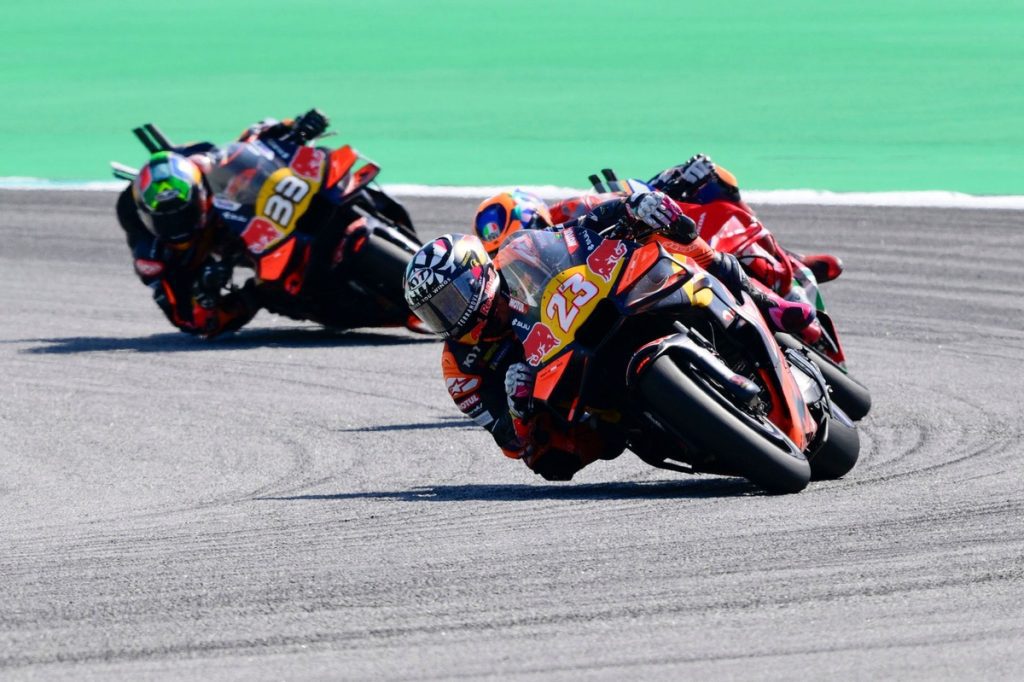Aprilia has produced a flexible bike capable of competing effectively on various circuits, while KTM has shown inconsistent performance, often dependent on the track’s compatibility with the RC16. Recent races, particularly the Malaysian Grand Prix, hinted that this perspective might not be entirely correct.
At Sepang, Aprilia fell short of expectations and performed poorly, while KTM emerged as a strong contender, closely challenging Ducati. The switch in standings for the two manufacturers can be attributed to several factors, some within their control and others influenced by external conditions.
KTM’s Remarkable Performance Explained
Time mistakes in qualifying: 0.362s
Sprint win gap: 5.155s
Race win gap: 2.676s
Fastest lap gap: 0.438s
This season, the RC16 has struggled with tire overconsumption, a problem that worsened in the warmer conditions of the flyaway races. In Australia, Pedro Acosta started strong but ultimately fell back to fifth as his rear tire failed. This incident prompted KTM to concentrate on addressing tire management before the Malaysian GP, leading to enhanced performance in the race.
“We tried to put more load on the front to improve grip, and it seemed to help,” factory rider Brad Binder noted. “The key was being very smooth on the throttle from the start.” Acosta also minimized electronic aids, relying on his instincts to manage tire wear during the race.
Aprilia’s Unexpected Poor Performance
Time mistakes in qualifying: 0.548s
Sprint winner gap: 10.2s
Grand Prix winner gap: 19.2s
Fastest lap gap: 1.344s
Arriving in Malaysia, Aprilia anticipated challenges at Sepang. Although they had resolved previous overheating issues, the weekend exposed ongoing limitations. Aprilia’s riders noted that lower track temperatures hindered performance despite increased heat on race day. Unfortunately, none of their riders qualified in the top 10, resulting in a disappointing race with Ai Ogura finishing the highest in 10th place, over 19 seconds behind the winner.
Marco Bezzecchi’s strategic choice of the less-favored medium tire backfired, leaving him in 11th. He believed a better tire selection could have mirrored his earlier sprint performance. Despite the results, he felt progress was made in understanding the bike’s behavior, affirming a commitment to improvement.



